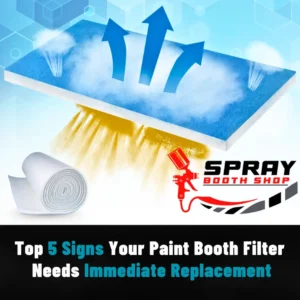
Clear Signs It’s Time to Change Your Paint Booth Filters
In the high-stakes world of professional painting and coating, a flawless finish is the ultimate goal. While spray guns, paint quality, and technician skill get most of the credit, the silent, diligent work of paint booth filters is the true foundation of a perfect job. These components are the unsung heroes of your operation, tirelessly trapping dust, debris, and hazardous overspray. The significant growth of the paint booth filter market, valued at USD 436.8 million in 2023 and projected to continue growing, underscores its increasing importance in modern finishing. However, when these essential components become clogged and inefficient, they transform from assets into liabilities, jeopardizing quality, safety, and your bottom line.
Vital Role of Filtration in Quality and Safety
A paint booth is a precisely controlled environment. Its primary function is to contain paint overspray while providing a clean, contaminant-free space for applying a coating. This is achieved through a complex system of air filters. Intake filters ensure the air entering the booth is clean, while exhaust filters capture harmful particulates and volatile organic compounds (VOCs) before the air is vented outside. This dual-action filtration is critical for preventing imperfections in the paint finish, protecting operator health from hazardous fumes, and complying with stringent environmental regulations.
Critical Signals for Filter Replacement
Ignoring filter maintenance is not an option. The key is moving beyond arbitrary, calendar-based schedules and adopting a performance-based approach. This article provides a comprehensive guide to the clear, data-driven signs that indicate it’s time to change your paint booth filters. By learning to read these signals—from observable physical changes to precise instrument readings—you can optimize your spray booth performance, ensure safety, and maintain the highest quality standards in every job.
1. Why Timely Filter Changes Are Paramount
Understanding when to change your filters begins with appreciating why it’s a non-negotiable aspect of paint booth maintenance. The consequences of neglect extend far beyond a dusty finish, impacting everything from production costs to regulatory standing.
Preserving Superior Coating Quality and Preventing Costly Rework
The most immediate impact of a failing filter is on the quality of your coating. Clogged intake or ceiling filters can no longer stop dust, dirt, and other debris from entering the booth. These contaminants land on wet paint, causing “dirt nibs” and other surface imperfections that require extensive, time-consuming rework. Similarly, overloaded exhaust filters reduce airflow, allowing overspray to hang in the air and settle back onto the surface, creating a hazy or mottled finish. Each instance of rework represents lost time, wasted materials, and diminished profitability.
Protecting Operator Health and Ensuring Regulatory Compliance
A spray booth is a crucial piece of safety equipment. Exhaust filters are designed to capture hazardous particulates and VOCs from paint overspray, protecting technicians from inhaling harmful substances. Overloaded filters lose their capture efficiency, allowing these contaminants to linger in the booth or escape into the surrounding environment. This poses a significant health risk and can lead to violations of OSHA and EPA regulations. For instance, proper filtration is key to transitioning to waterborne paints, a process reliant on effective filtration.
Optimising Operational Efficiency and Controlling Production Costs
Dirty filters force the entire ventilation system to work harder. The fans in your air make-up unit and exhaust plenum must struggle against increased resistance, consuming more energy and undergoing excessive wear and tear. This leads to higher utility bills and the potential for expensive equipment failure. Furthermore, reduced airflow can extend paint drying and curing times, creating bottlenecks in your production schedule. Proactive filter maintenance is a direct investment in operational efficiency, preventing unplanned downtime and controlling costs.
2. Understanding Your Filtration System
A typical paint booth uses several types of filters, each with a specific job. Recognizing their roles is fundamental to diagnosing problems and performing effective maintenance.
Intake Filters and Prefilters: The First Barrier Against External Contaminants
Located at the air inlet, intake filters are the first line of defense. Their job is to clean the air coming into the booth from the outside environment. Prefilters are often used in conjunction with main intake filters to capture larger particles of dust and debris, thereby extending the life of the more expensive, finer-particle filters downstream.
Ensuring a Clean, Downward Airflow for Flawless Finishes
In a downdraft spray booth, the final stage of intake filtration occurs at the ceiling. These high-efficiency diffusion media filters ensure that the air flowing down over the vehicle or part is exceptionally clean and evenly distributed. The integrity of these ceiling filters is paramount for preventing microscopic dust particles from contaminating the final coating.
Exhaust Filters and Paint Arrestors
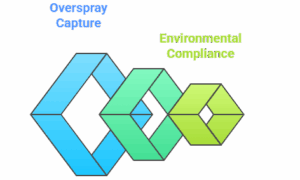
Positioned in the booth’s floor or walls, exhaust filters, also known as paint arrestors, are the workhorses of the system. Their primary function is to capture wet paint overspray and solid particulates before the air is exhausted from the booth. These filters must have high holding capacity and efficiency to prevent overspray from coating the exhaust fan, ductwork, and the outside environment.
Activated Carbon Filters (Charcoal Backed) for Odor and VOC Abatement
For operations that require advanced odor and VOC control, activated carbon filters are often used as a final stage in the exhaust system. The porous structure of activated carbon adsorbs chemical fumes and solvent vapors, neutralizing odors and helping facilities meet the strictest environmental air quality regulations.
3. Observable Signs: What Your Senses Can Tell You
Before you even look at a gauge, your senses can provide powerful clues about the health of your paint booth filters. Regular visual and sensory inspections are the first step in a proactive maintenance program.
Visible Accumulation and Physical Deterioration of Filter Media
The most obvious sign is visible loading. Look at your exhaust filters. Are they heavily caked with paint overspray? Do they appear dark and saturated? For intake filters, is there a noticeable layer of dust and grime? Any physical damage, such as rips, tears, or warping of the filter media, is an immediate red flag, as it creates a direct path for contaminants to bypass the filter entirely.
Deteriorating Air Quality and Lingering Odors
A properly functioning paint booth should clear overspray and fumes quickly. If you notice a persistent haze of overspray that hangs in the air long after painting has stopped, it’s a strong indicator of restricted airflow caused by clogged exhaust filters. Similarly, if solvent or paint odors linger in the booth or are noticeable outside the shop, your filtration system—particularly any carbon filters—is likely saturated and no longer effective.
Changes in Booth Environment: Noise and Light
Listen to your booth. When filters are severely clogged, the exhaust fan may become louder as it strains to pull air through the restricted media. In some cases, you might hear a whistling sound as air is forced through small gaps or tears. Additionally, pay attention to the lighting. Over time, overspray that bypasses failing exhaust filters can coat light fixtures, dimming the booth and making it difficult to assess color and coverage accurately.
4. Performance Indicators: Data-Driven Signals for Proactive Replacement
While sensory cues are important, data provides the most reliable and objective signals for filter replacement. Using instruments to monitor your booth’s performance removes guesswork and allows for truly proactive maintenance.
Interpreting Pressure Readings: Your Booth’s Vital Signs
The single most important tool for monitoring filter health is a manometer or Magnehelic gauge. This device measures the differential pressure—the difference in air pressure between the clean side and the dirty side of a filter bank. When filters are new, the pressure difference is low. As they capture contaminants and become loaded, the resistance to airflow increases, and the pressure difference rises. Your booth manufacturer will specify a maximum recommended pressure drop. Once the gauge reading reaches this point, the filters have reached the end of their service life and must be changed. This is not just a best practice; regulations often expect gauges to be present to indicate when service is needed.
Measuring Airflow and Ventilation Efficiency
Consistently high-quality finishes depend on consistent airflow. Clogged filters directly impede this. A key performance indicator is face velocity—the speed at which air is drawn into the exhaust filters. For many dry-filter booths, this should be around 100 feet per minute (fpm). If measurements taken with an anemometer show a significant drop below this design specification, it’s a clear sign that your filters are restricting the system. Falling airflow degrades finish quality and can even trigger safety citations if hazardous conditions are documented.
Direct Impact on Paint Finishes and Coating Quality
Ultimately, the proof is in the final product. A sudden increase in paint defects is often the earliest operational signal that your filtration system is failing. Suppose your team starts reporting a higher incidence of dust nibs, mottling, or a hazy finish. In that case, it’s time to correlate these quality issues with your pressure gauge readings and a physical inspection of the filters. These defects are a direct result of contaminants entering the booth or overspray failing to be effectively removed.
5. Connecting Filter Issues to Common Paint Booth Problems
When problems arise, knowing how to connect the symptom to the source is crucial. Many common paint booth issues can be traced directly back to filter maintenance.
Specific Paint Defects & Their Filter Causes
- Dirt Nibs/Dust in Finish: This is the classic sign of failing intake or ceiling filters. Contaminants are being drawn into the booth and landing on the wet surface.
- Hazy or Mottled Finish: Insufficient airflow due to clogged exhaust filters allows atomized paint particles to hang in the air and settle unevenly on the surface.
- Orange Peel: While often related to application technique, severe airflow restriction from clogged filters can affect how paint lays down and flows out, contributing to this texture defect.
Persistent Odor Complaints: Saturated Carbon Filters
If you or your neighbors notice strong paint or solvent odors, the activated carbon filters in your exhaust stack are the primary suspect. These filters have a finite capacity to adsorb VOCs. Once saturated, they can no longer trap fumes, which are then released directly into the atmosphere.
Excessive Fan Noise or Overheating: Severe Airflow Restriction
A fan that is whining, vibrating, or running hot is under extreme strain. The most common cause in a paint booth is severely clogged exhaust filters that create a near-total blockage, forcing the motor to work beyond its design limits. This is a critical warning sign that precedes costly equipment failure.
Regulatory Non-Compliance & Safety Hazards
Failing to maintain filters can lead to serious compliance issues. The EPA requires a minimum of 98% capture efficiency for many refinishing operations. Clogged or damaged filters cannot meet this standard. Furthermore, poor ventilation creates an unsafe working environment with elevated concentrations of hazardous fumes, posing a direct threat to worker health and risking OSHA violations.
6. The Long-Term Benefits of Proactive Filter Maintenance
Treating filter replacement as a strategic investment rather than a recurring cost yields significant long-term benefits for any painting operation.
Avoiding Costly Downtime, Rework, and Production Losses
Proactive maintenance prevents the problems that cause production to grind to a halt. By changing filters based on performance data, you avoid unexpected quality failures that require entire jobs to be redone. This keeps your production schedule on track and maximizes throughput, which is vital in a market where global vehicle production exceeded 80 million units in 2023, driving immense demand for high-quality finishes.
Extending the Lifespan of Expensive Equipment

Your booth’s ventilation system is a major capital investment. By ensuring that filters are clean and airflow is unrestricted, you reduce the strain on fan motors, bearings, and belts. This simple maintenance practice can add years to the life of your equipment, delaying expensive replacements and minimizing repair costs.
Maximizing the Efficiency and Capture Efficiency of Your Booth
A paint booth with clean filters operates exactly as it was designed to. It provides optimal airflow for flawless finishes, efficiently captures dangerous overspray, and consumes energy at the intended rate. This peak performance ensures you are getting the maximum return on your investment, producing the best possible product, and maintaining a safe, compliant workplace for your team. Modern tools, such as predictive filter monitoring, can further enhance booth efficiency by tracking filter health and forecasting replacement needs.
The Case for Proactive Filter Maintenance
Your paint booth filters are far more than disposable components; they are integral to the quality of your work, the safety of your employees, and the efficiency of your entire operation. Moving away from a reactive “change it when it’s clogged” mentality to a proactive, data-driven strategy is essential for success. By learning to recognize the clear signs—from visible loading and lingering odors to rising manometer readings and declining airflow—you empower yourself to maintain your spray booth at peak performance.
Your next steps should be clear:
- Establish Baselines: If you haven’t already, install a manometer and record the differential pressure with a fresh set of filters. This is your clean baseline.
- Implement Daily Checks: Make quick visual inspections and gauge readings a part of your daily opening or closing procedures.
- Train Your Team: Ensure technicians understand the link between filter health and finish quality, encouraging them to report any changes in booth performance or paint defects immediately.
- Stock Spares: Keep a full set of replacement filters on hand to prevent downtime when a change is needed.
By treating your filters with the attention they deserve, you are not just performing maintenance; you are investing in quality, safety, and profitability.
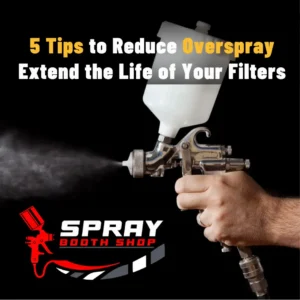 5 Tips to Reduce Overspray and Extend the Life of Your Filters
5 Tips to Reduce Overspray and Extend the Life of Your Filters 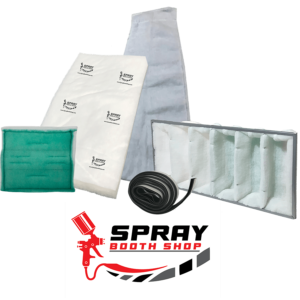 The Importance of Changing Paint Booth Filters: When and Why to Replace Pre-Filters, Ceiling Intake Filters, and Exhaust Filters
The Importance of Changing Paint Booth Filters: When and Why to Replace Pre-Filters, Ceiling Intake Filters, and Exhaust Filters 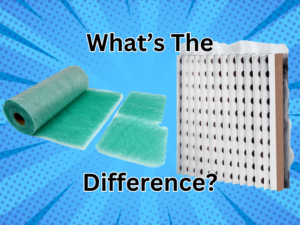 Understanding Spray Booth Filters
Understanding Spray Booth Filters 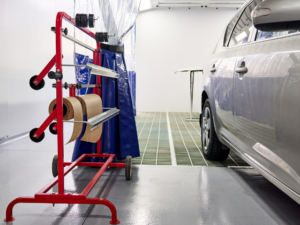 How to Choose Spray Booth Supplies
How to Choose Spray Booth Supplies 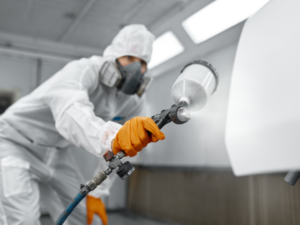 The Role of Humidity in Spray Booths in Colorado
The Role of Humidity in Spray Booths in Colorado